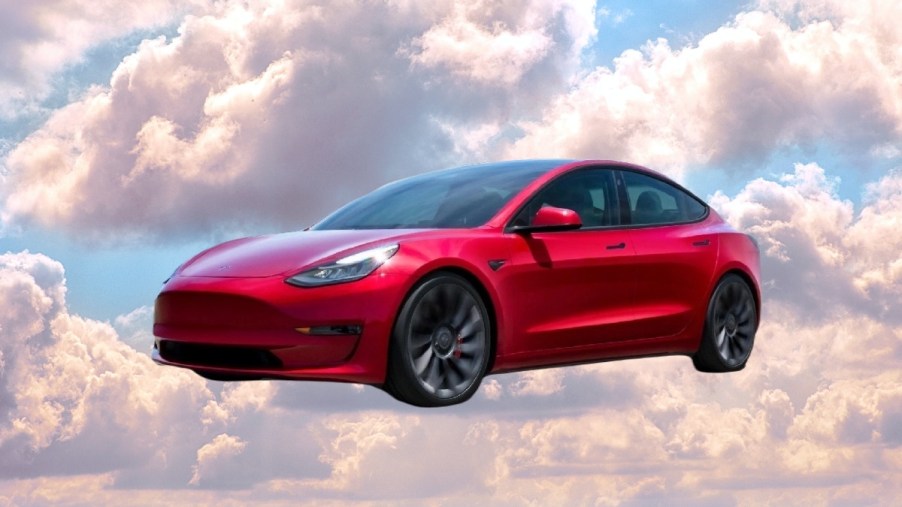
Air-Powered Car? New Tech Pulls Electricity Out of Thin Air — Better Than EVs and Gas
To minimize environmental damage, such as air pollution and climate change, many tout EVs as an alternative to gas-powered vehicles. However, electric cars have issues as well. This includes “range anxiety” — or the fear of running out of electric power. There’s also harm to the environment and human rights violations from mining lithium, which EV car batteries utilize. However, a groundbreaking new technology could be the answer — and avoid these problems. It’s an air-powered car, which pulls electricity out of thin air.
New technology harvests electricity from air: Many applications, including air-powered cars

The search for a sustainable and eco-friendly energy source is a critical issue for the automotive industry. With the threat of climate change and new mandates, many automakers are moving at full force with electric cars.
However, along with the aforementioned environmental and human rights concerns, there’s another problem with the mining of lithium and other materials used for EVs: limited supply. This is one of the reasons why there’s an EV shortage right now. The demand is there, but not the supply.
Conversely, there’s a resource on the planet in which there’s an unlimited supply — and it’s all around us, wherever we go. It’s air. And with a new technology that can harvest electricity from air using nearly any material, there could be a revolution in many industries, including automotive. You could be driving an air-powered car in the future.
Air-gen device produces clean energy and is only the size of a thumbnail

The air-generator device, also called an “Air-gen,” produces clean energy by extracting it from air humidity. Scientists from the University of Massachusetts at Amherst (UMass) recently published the results of an Air-gen study in Advanced Materials, as detailed by the Washington Post.
A previous study published three years ago showed that energy could be sourced from air using bacteria. However, now, a new study published in 2023 shows that the Air-gen device can use nearly any type of material, such as silicon or wood. The tiny device, which is the size of a thumbnail and thinner than a strand of hair, works at a molecular level by smashing the material into small particles. It then remakes it with microscopic pores.
Each device has tiny holes that are smaller than 100 nanometers in diameter. This is less than a thousandth of the width of a strand of hair. After drawing water from the air humidity, the water passes through the holes. This results in a charge imbalance in the upper and lower parts of the Air-gen, which essentially creates a continuously running battery.
Air-gen can provide continuous electricity for cars from any location
Along with providing a clean energy source, another benefit of the Air-gen device is you can use it from anywhere. Gas-powered vehicles with an internal combustion engine have to fill up the tank at fuel stations. Also, EVs have to power up at charging stations. Additionally, range anxiety is still a concern for most electric cars.
However, a fully-developed air-powered car wouldn’t face these issues. It can provide continuous electricity from any location — day or night. Since air is everywhere, it could keep charging in a forest, on top of a mountain, on a far-flung road, or anywhere else far away from a typical facility that’s necessary to power up a vehicle.
It would no longer be necessary to have gas stations for internal combustion engine vehicles and charging stations for EVs. With continuous charging of the Air-gen device, an air-powered car is free of these limitations.
Jun Yao, the senior author of the study and a professor of electrical engineering at UMass, said, “What we have invented, you can imagine it’s like a small-scale, man-made cloud. This is really a very easily accessible, enormous source of continuous clean electricity. Imagine having clean electricity available wherever you go.”
Challenges for the device
To have enough electricity for an air-powered car, there would need to be many of the tiny Air-gen devices. Xiaomeng Liu, another author of the study and a graduate student at UMass, said that roughly one billion devices could be stacked up the size of a refrigerator to power a home.
However, an air-powered car would require less energy than a typical house — and, therefore, fewer Air-gen devices. Also, the research team is working on ways to make the number of necessary devices lower, with less needed space.
There are other factors to consider for improving the effectiveness and efficiency of the Air-gen device. This includes selecting what material is most suitable for different climates and the best way to stack the devices. The researchers are also considering making each individual device larger — but without blocking the humidity to harvest the energy.
Once the Air-gen device is finalized and fully developed, Liu says it can be placed anywhere. For a house, it could be embedded in the walls. And for an air-powered car, there could be devices placed inside the exterior surfaces.
It’s a brave new world with many possibilities from new technologies. While still in its development stage, the new tech for air-powered cars holds much promise. It could be a more sustainable and eco-friendly alternative to EVs and gas-powered vehicles.


